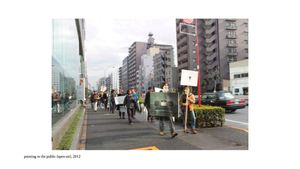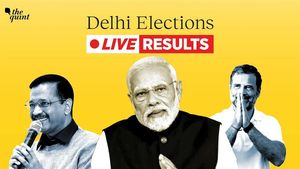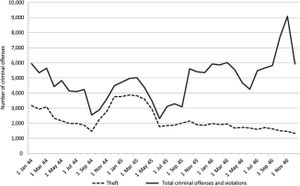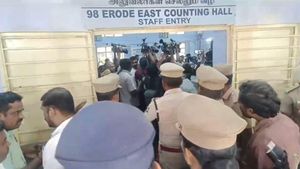The highly anticipated Delhi Assembly election results for 2025 began on February 8, with early trends indicating the Bharatiya Janata Party (BJP) is leading against the Aam Aadmi Party (AAP) and the Congress. Vote counting commenced at 8 am across 19 counting centers, with approximately 60.54 percent of over 15 million registered voters casting their votes on February 5. Security was elevated at all counting locations, with over 10,000 police personnel deployed to maintain order during the counting process.
Early trends reflect the BJP's strong start, establishing leads on more than 30 seats within the first half-hour of counting, with the AAP handling over 20 seats. While these trends are subject to change, they highlight significant shifts from previous elections.
Delhi Chief Minister and AAP candidate Arvind Kejriwal is currently trailing the BJP's Parvesh Verma in the New Delhi constituency, marking what could be an unexpected outcome for the incumbent party. Meanwhile, Atishi, another prominent AAP figure, is facing challenges from BJP's Ramesh Bidhuri in the Kalkaji constituency.
With the BJP's resurgence potential allowing them to reclaim power after nearly three decades, the stakes for this election are particularly high. The party, which previously held control of Delhi until it was dethroned by AAP's historic run starting in 2013, has made fresh promises to maintain and bolster existing welfare schemes.
According to various exit polls released prior to the election results, the BJP is poised for victory, making projections for 35 to 60 seats, whereas the AAP is expected to secure between 10 to 26 seats, with Congress predicted to fare poorly once again. AAP leaders, including Sisodia, have expressed confidence, asserting this election as being emblematic of their governance since assuming power and indicating faith from Delhi's populace.
"Everyone has anxiety on result day. We are human too... But we have faith we'll emerge victorious, as we have worked hard under the leadership of Arvind Kejriwal. The people voted for the politics of honesty and work," said AAP candidate Manish Sisodia. On the other hand, Congress candidate Alka Lamba voiced concerns about AAP's incumbency, noting the discontent from voters about on-ground issues.
The election season also saw aggressive campaigning, where AAP emphasized their significant undertakings, boasting advances made to health and education sectors, promising free utilities, and more. The BJP, under the leadership of Delhi-based politicians including BJP president Virendra Sachdeva, launched counter-campaigns focusing on corruption and local dissatisfactions, cultivating narratives of needing change from AAP's administration.
"We believe the people of Delhi have longed for change from corruption, especially under the previous opposition leadership of the AAP," Sachdeva stated. This reveals the deep rivalry particularly surrounding the turnout, which has historically fluctuated. Key constituencies are being closely monitored; regions such as Northeast Delhi showcased the highest participation, indicating engagement among voters.
This election marks the third consecutive term bid for AAP and the potential comeback for BJP. If successful, it would be monumental for the BJP, marking their return after 27 years absent from power. Conversely, failure for AAP would disrupt their narrative and political strategies these past years.
Overall, the dynamics of the Delhi Assembly elections encapsulate the strains of local politics, participatory democracy, and aggregate voter sentiment. With counting still underway, the outcome will undoubtedly shape the operational and administrative motives leading for the next five years.
The election results bring moments of both anticipation and analysis as candidates and constituents await clear declarations. AAP, BJP, and Congress’s campaign efforts have led to compelling narratives outlining their policies and visions. The winning party will need to move swiftly to address the needs of the populace, one way or another.



